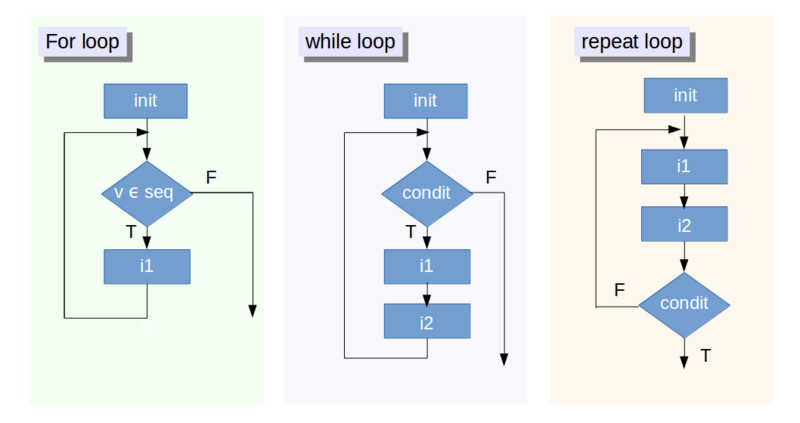

The point is that by using the %:% operator, you can convert a nested for loop to a nested foreach loop, use %dopar% to run in parallel, and then tune the size of the tasks using the chunkSize option so that they are big enough to be executed efficiently, but not so big that they cause load balancing problems. So for now, you need to specify the chunk size manually. It would be nice if the chunk size could be picked automatically, but I haven’t figured out a good, safe way to do that. In this article, you will learn to create a for loop in R programming. You can also specify options for multiple backends, and only the option list that matches the registered backend will be used. Loops are used in programming to repeat a specific block of code.
#HOW TO DO A LOOP IN R CODE#
If you’re not using doNWS, then this argument is ignored, which allows you to write code that is backend-independent. combine= 'c') %dopar% x # result.1 result.2 result.3 result.4 Opts <- list( chunkSize= 2) x <- foreach( b=bvec. And when we parallelize that nested foreach loop by changing the %do% into a %dopar%, we are creating a single stream of tasks that can all be executed in parallel: That is why there is only one %do% operator in the example above. That is exactly what the %:% operator does: it turns multiple foreach loops into a single loop. You can also nest DO loops inside one another all in the same definition: : TABLE CR 11 1 DO 11 1 DO I J 5 U.R LOOP CR LOOP Notice this phrase in the inner loop: I J The Forth word J copies the next outer loop index onto the parameter stack. You just need to be careful to process all of the results correctly, depending on which iteration of the inner loop they came from. You really want to think of the loops as specifying a single stream of tasks. And if the tasks and number of iterations vary in size, then it’s really hard to know which loop to parallelize.īut in our Monte Carlo example, all of the tasks are completely independent of each other, and so they can all be executed in parallel. You could parallelize an inner loop instead, but that could be inefficient because you’re repeatedly waiting for all the results to be returned every time through the outer loop. However, if the outer loop doesn’t have many iterations and the tasks are already large, parallelizing the outer loop results in a small number of huge tasks, which may not allow you to use all of your processors, and can also result in load balancing problems. This results in larger individual tasks, and larger tasks can often be performed more efficiently than smaller tasks.

The standard advice is to parallelize the outer loop. This violates the DRY principle, known in every programming language: Don’t Repeat Yourself, at all cost.When parallelizing nested for loops, there is always a question of which loop to parallelize. You immediately see this is rather tedious: you repeat the same code chunk over and over. You can do this as follows: print(paste("The year is", 2010)) Suppose you want to do several printouts of the following form: The year is where is equal to 2010, 2011, up to 2015. Let’s get back to the conceptual meaning of a loop. If you want to learn more on the concepts of vectorization in R, this is a good read.
#HOW TO DO A LOOP IN R HOW TO#
Nevertheless, as a beginner in R, it is good to have a basic understanding of loops and how to write them. For example, solutions that make use of loops are less efficient than vectorized solutions that make use of apply functions, such as lapply and sapply. Simply put, this allows for much faster calculations. Why? Well, that’s because R supports vectorization. When surfing on the web you’ll often read that one should avoid making use of loops in R. Sounds weird? No worries, it will become more clear once we start working with some examples below.īefore you dive into writing loops in R, there is one important thing you should know. They allow you to automate parts of your code that are in need of repetition. It is aimed at beginners, and if you’re not yet familiar with the basic syntax of the R language we recommend you to first have a look at this introductory R tutorial.Ĭonceptually, a loop is a way to repeat a sequence of instructions under certain conditions. In this tutorial we will have a look at how you can write a basic for loop in R.


 0 kommentar(er)
0 kommentar(er)
